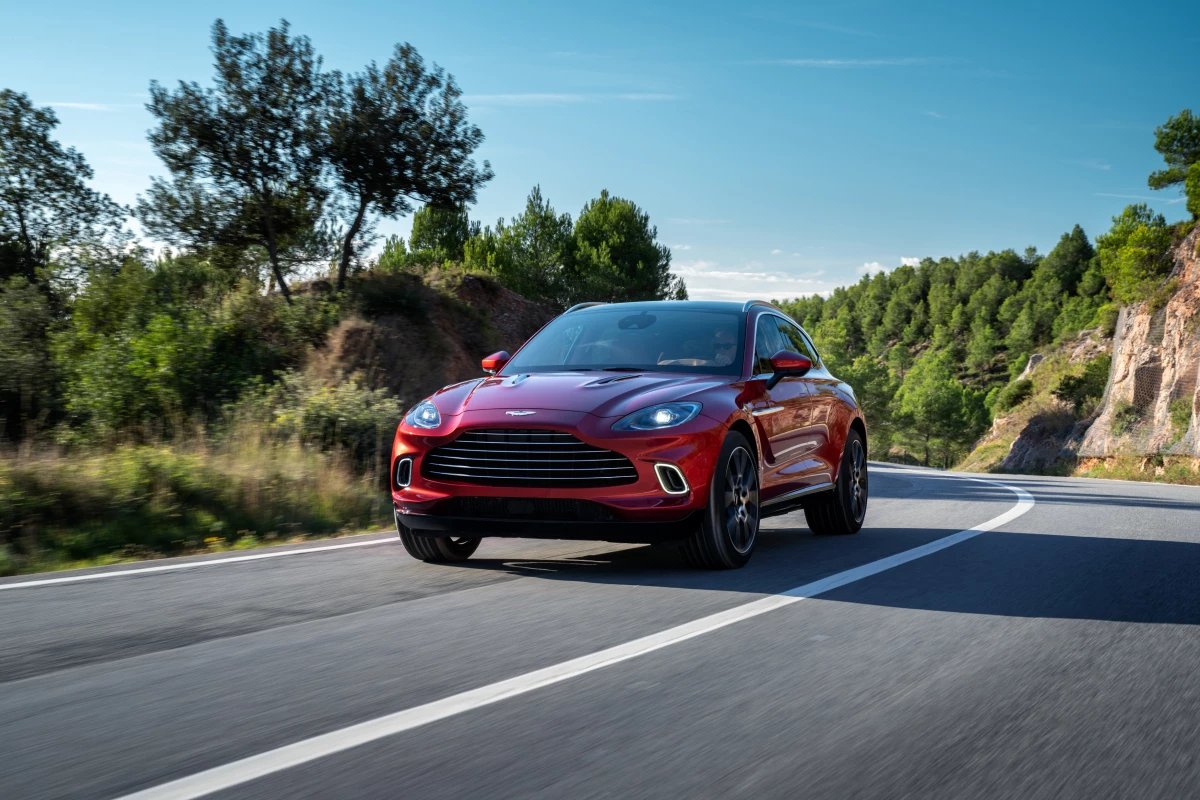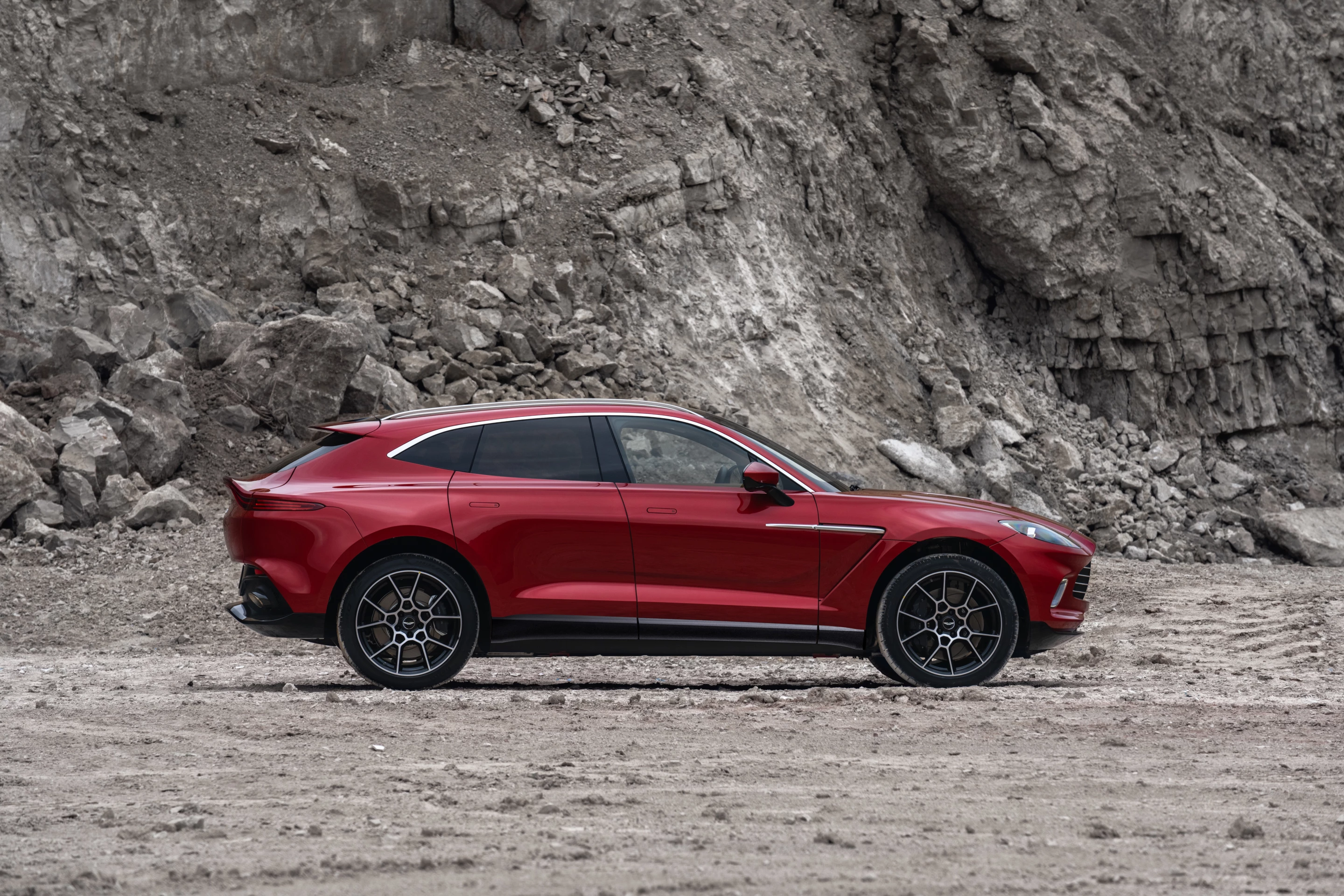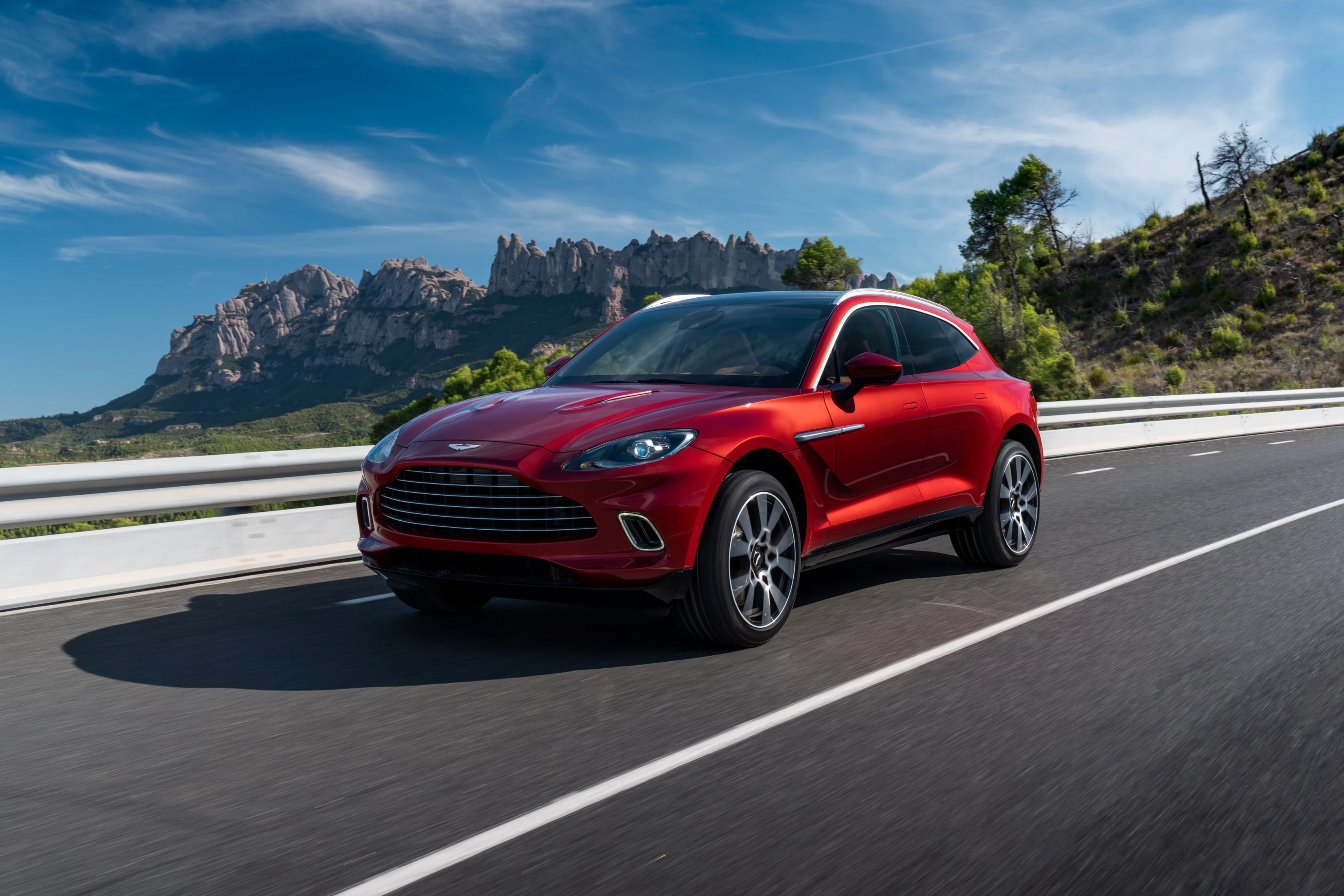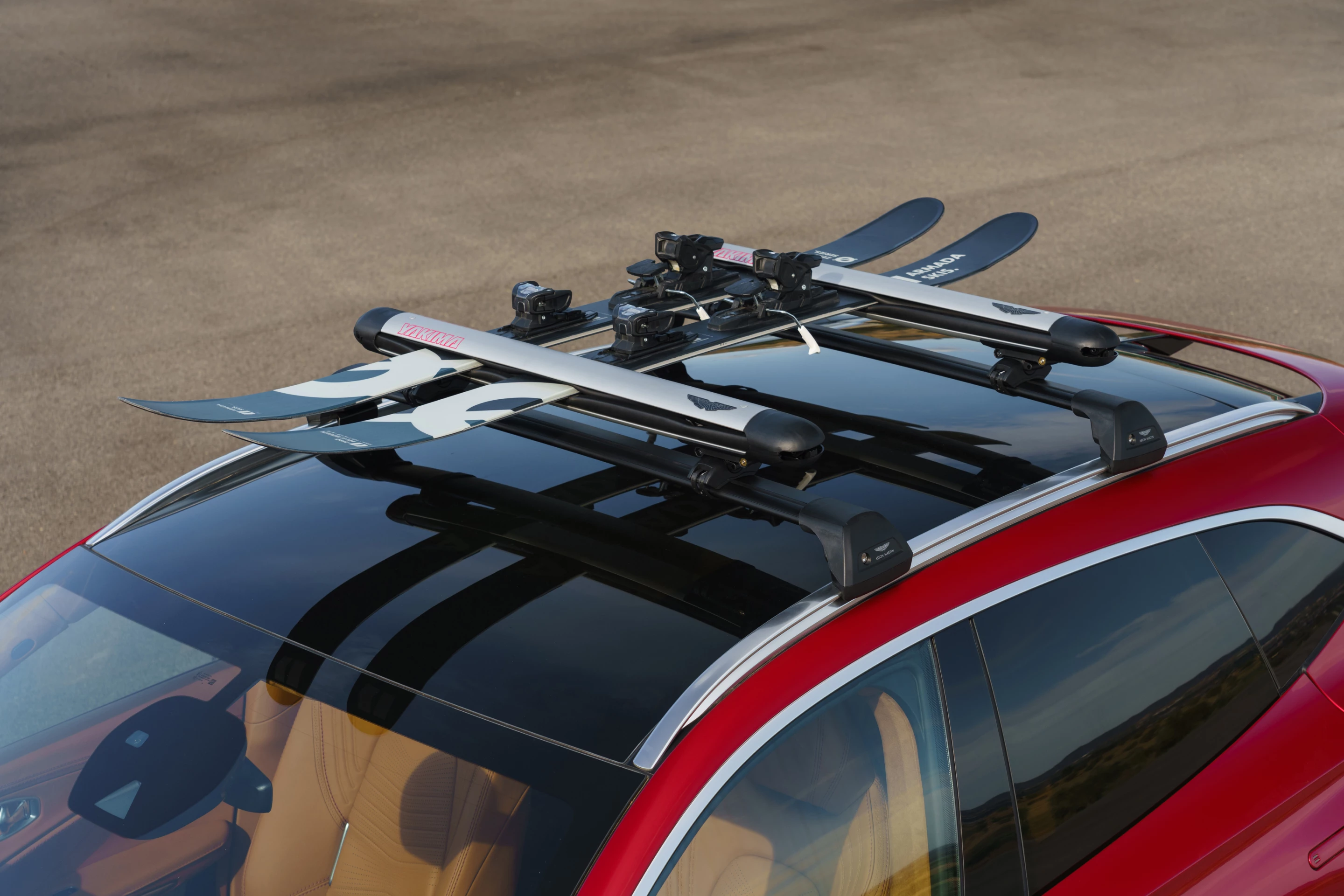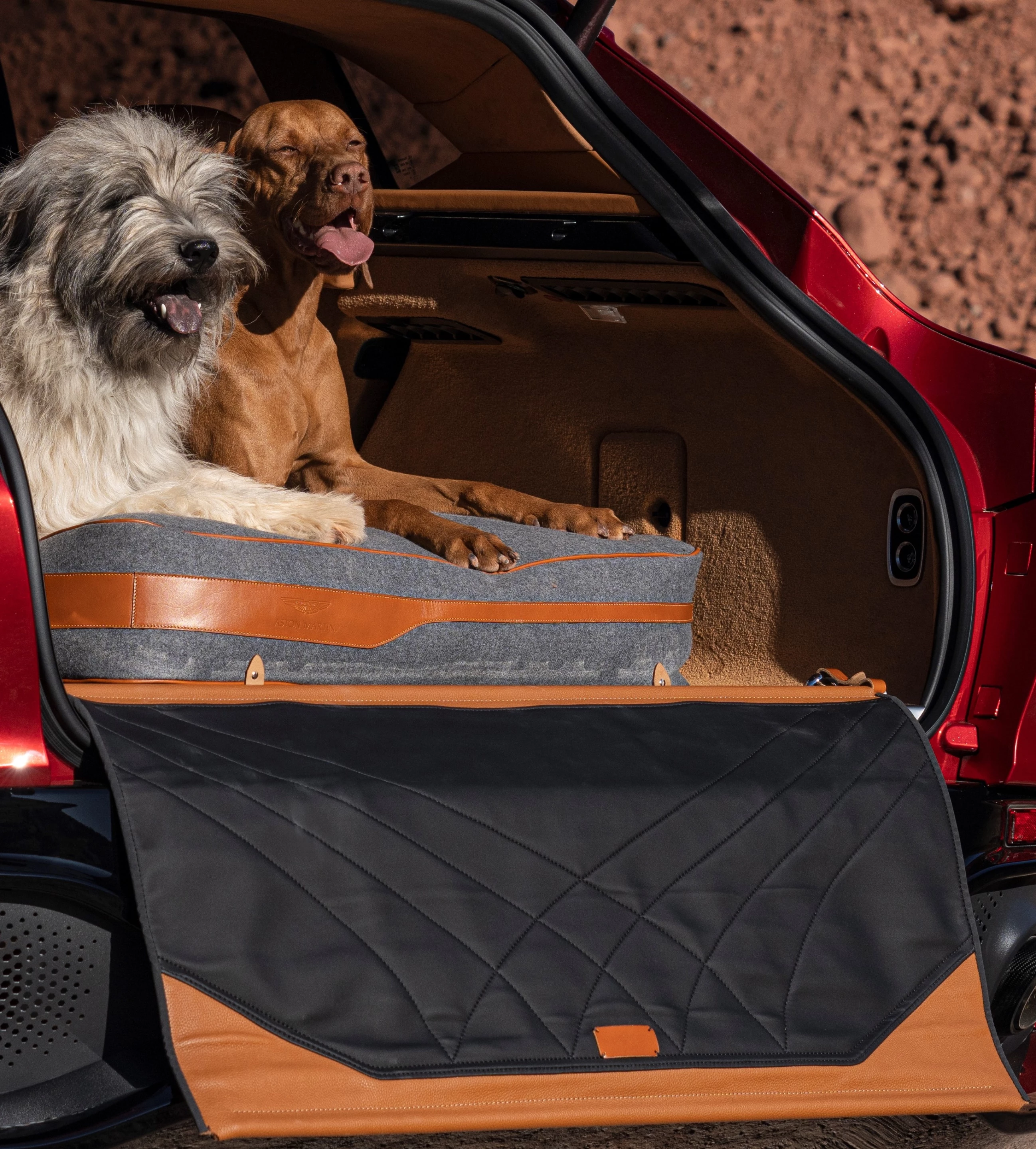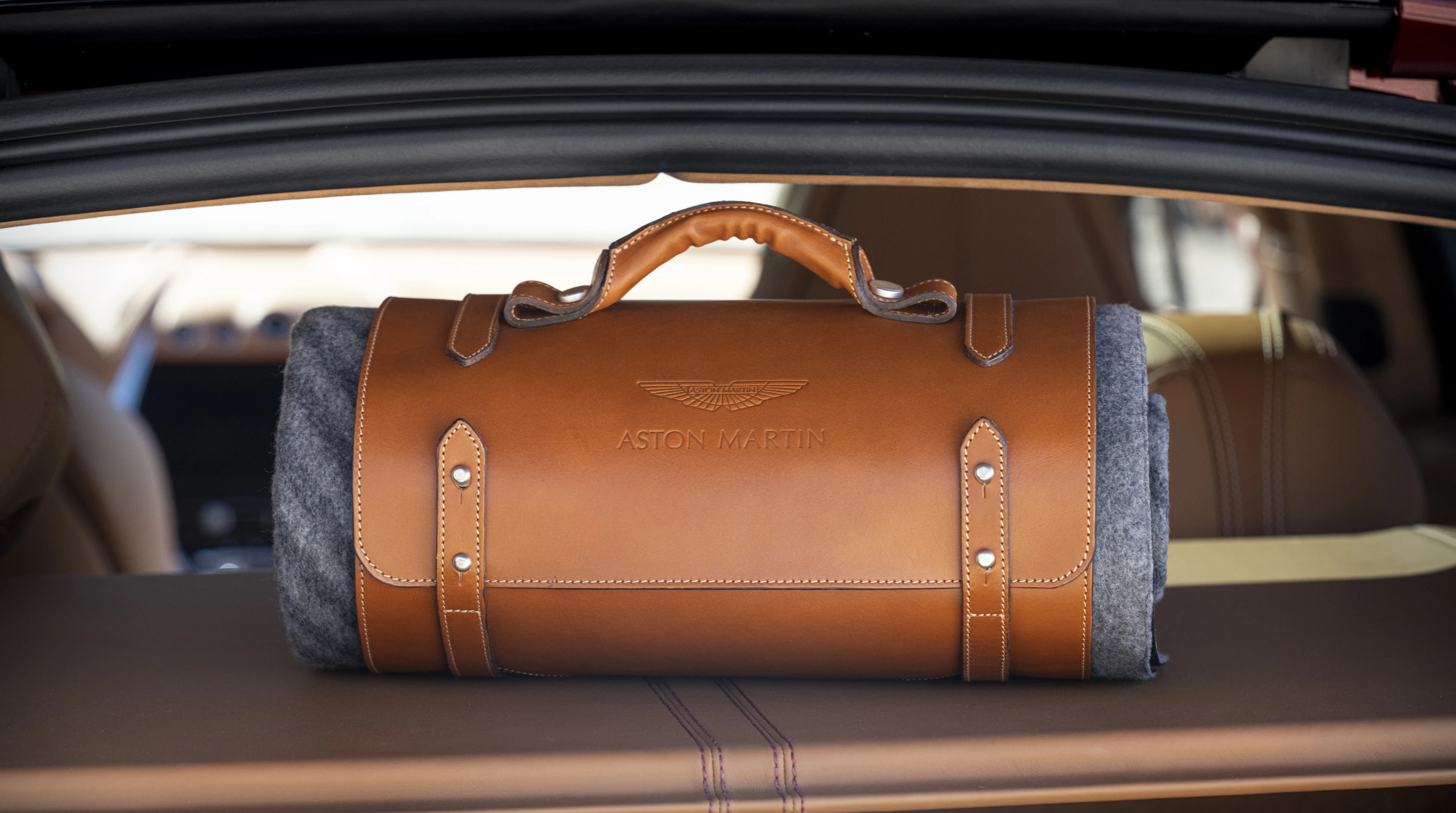For the first time in its 106-year history, Aston Martin has unveiled a sport utility as its latest vehicle on offer. Called the DBX, its design began in 2015, with teases of its engine and interior being offered over the past year.
The DBX reportedly has the “dynamics of a sports car” alongside off-road versatility. That seems to be the way most Old World automakers introduce their non-cars to the world ... as if to placate the purists who somehow won’t like the concept of an SUV. Of course, with Aston Martin, the unveiling of the DBX was not just about the car. It was about the AM lifestyle, full of leather and accessories (not mutually exclusive).
Debuting with the new SUV is a full suite of accessories that includes a luggage set to match the DBX’s leather interior, a picnic blanket (which wraps in leather when rolled up), a special dog blanket and pet bed with leather accents, and saddle bags fit specifically for the rear seat of the DBX – also leather, on both counts.
Like most Aston Martin vehicles, the DBX begins with a structure made of bonded aluminum atop a unique platform made specifically for it. The chassis sits on a specially-designed adaptive triple-volume air suspension system (on 3-chamber air springs) and electronic adaptive dampers. This gives control in all driving situations, whether on the road or off, AM says, allowing the ride height of the DBX to raise by up to 1.77 inches (45 mm) or lower by up to 1.97 inches (50 mm), changing vehicle dynamics for varied uses.

These adaptive systems work with Aston Martin’s eARC anti-roll control system, which can distribute up to 1,400 Nm of anti-roll force per axle. This limits body roll and, Aston says, allows the DBX to handle like a sports car despite its SUV design.
Powering the DBX is the 4-liter twin-turbocharged V8 also found in the DB11 and Vantage. In the DBX, that engine outputs 550 PS (404.5 kW) and 369 lb-ft (700 Nm) of torque. An active exhaust system, cylinder deactivation system, and specific tuning of these for the DBX mean that the SUV is capable of 4.5-second 0-62 mph (100 km/h) sprints. Top speed for the DBX is set at 181 mph (291 km/h).
A nine-speed automatic transmission and all-wheel drive transmits the engine’s power to the wheels. An active center differential and a rear limited-slip differential round out the power delivery in varied situations.
There is 22.31 cubic feet (632 liters) of cargo space in the five-seat DBX – plenty of room for all of the leather-made extras and the show-winning canines to occupy. To facilitate this, Aston Martin offers several packages to enhance the DBX, including a Pet package for the aforementioned best friends which includes a portable pet washing station, and a Snow package that includes boot warmers.

In a nod away from its James Bond-infused past and towards a more politically-correct future, Aston Martin also makes heavy mention of its Female Advisory Board (FAB), especially in the DBX’s interior design elements. Leather from Bridge of Weir is found throughout the DBX, of course, but unusually, even the headliner and roof glass coverings can be Alcantara. Glass, composites, and wood finish out the cabin’s interior materials.
The DBX features a 10.25-inch infotainment screen and a 12.3-inch driver information screen. Ambient lighting in the interior has 64 color options, and can be controlled in two separate zones.
An exclusive 1913 package, celebrating Aston Martin’s founding, will be available to the first 500 buyers of the DBX. This will have unique badging and be signed by Aston Martin’s current CEO, Andy Palmer. The Aston Martin DBX will be priced starting at US$189,900 in North America, with similar pricing for other world markets. Deliveries will begin in the second quarter of 2020.
Source: Aston Martin
